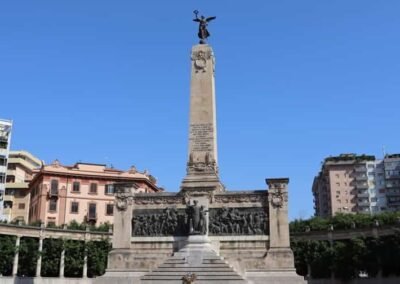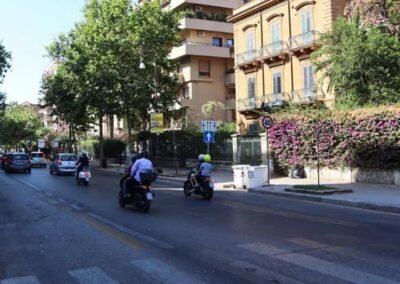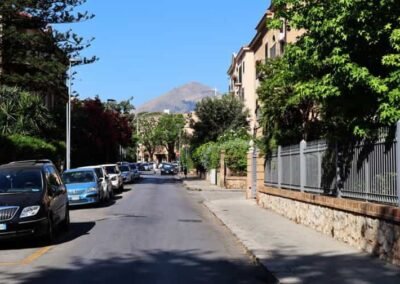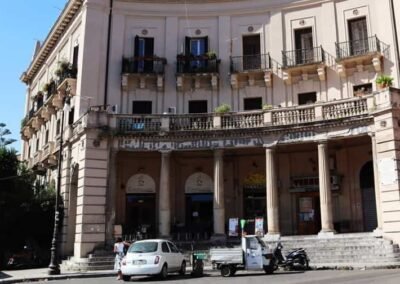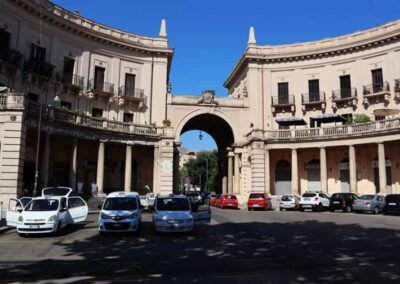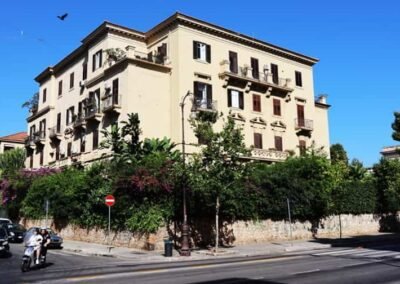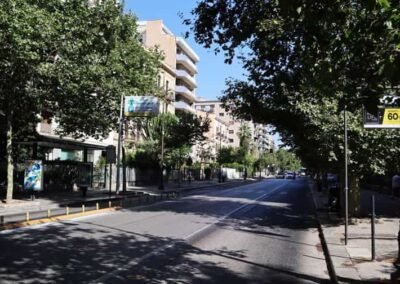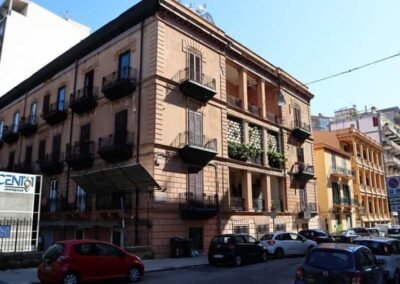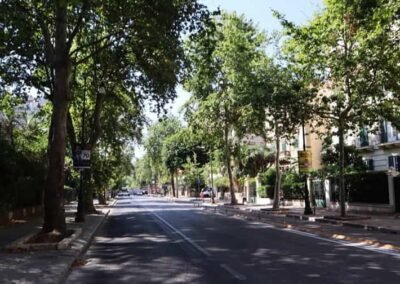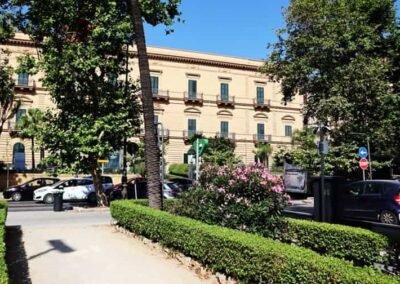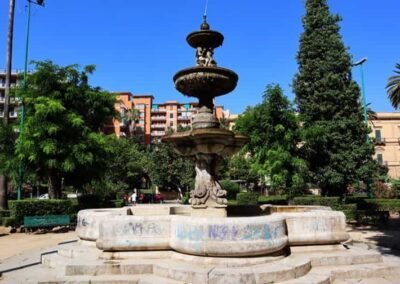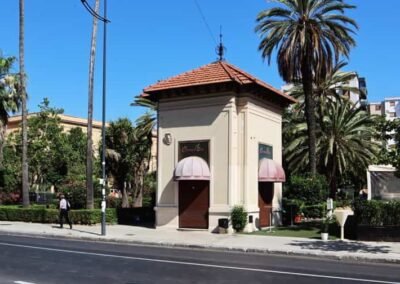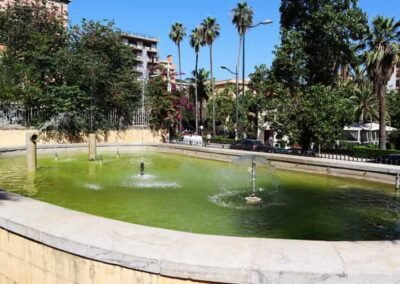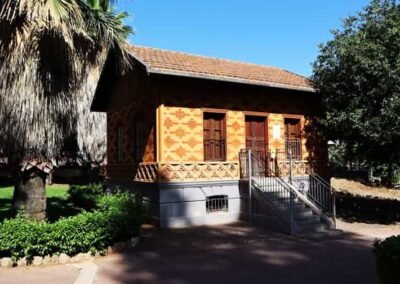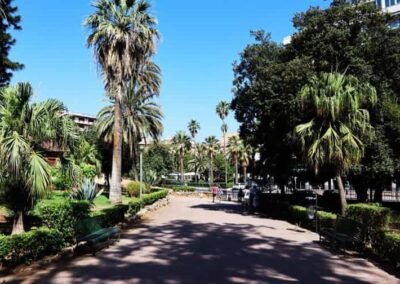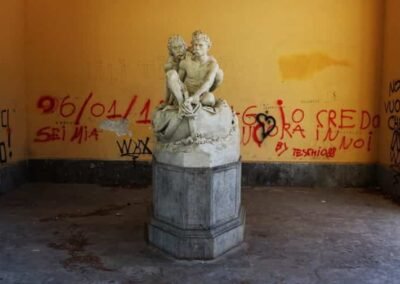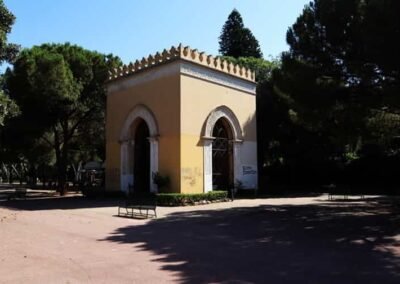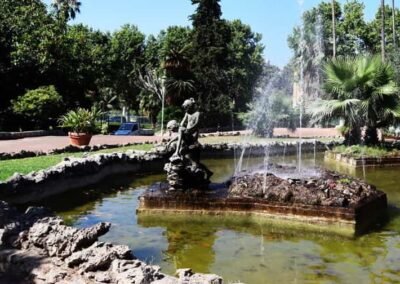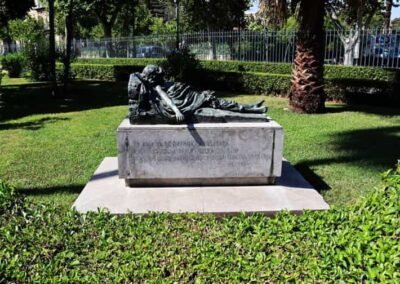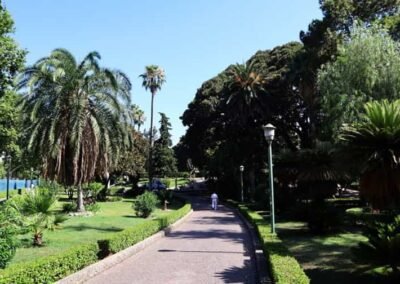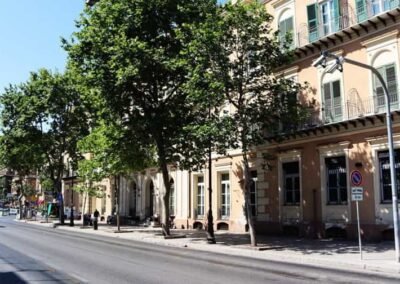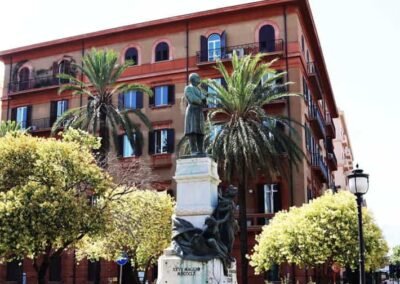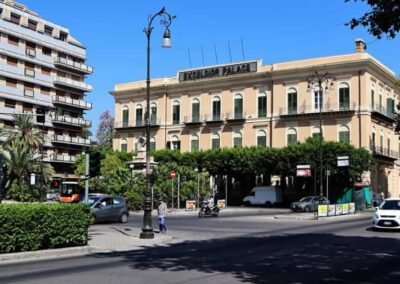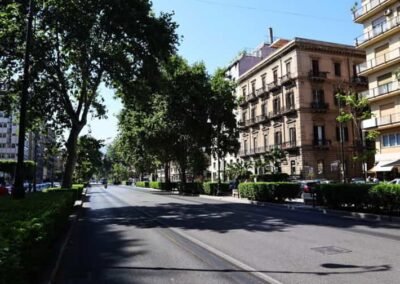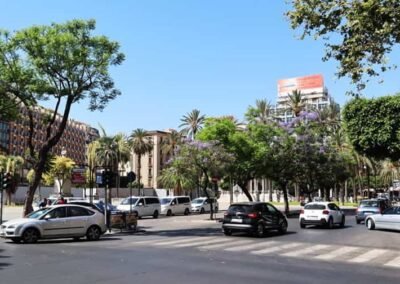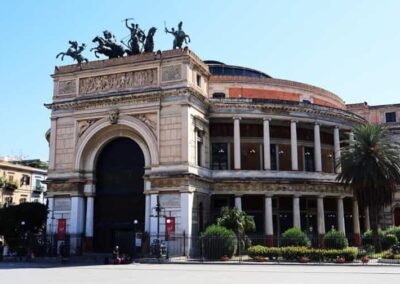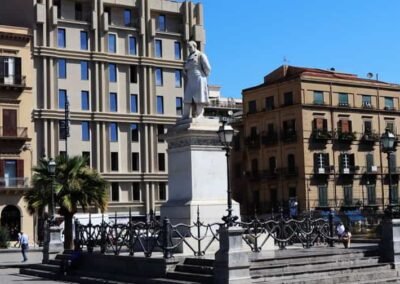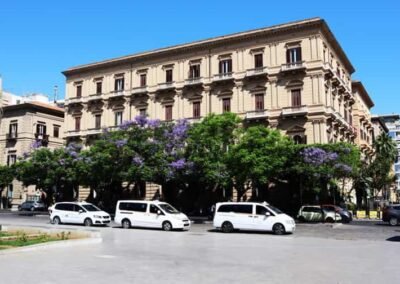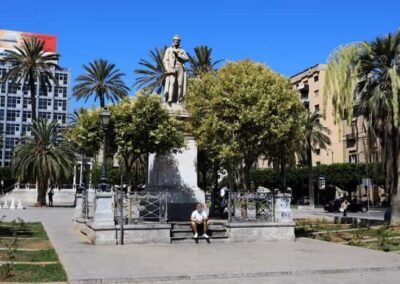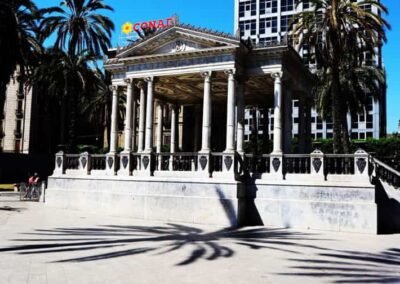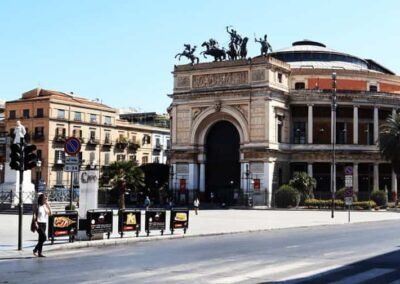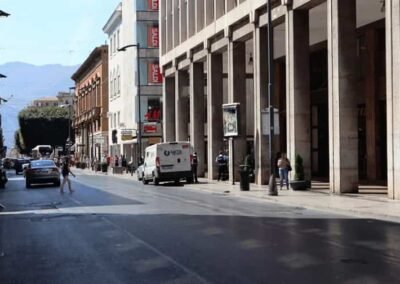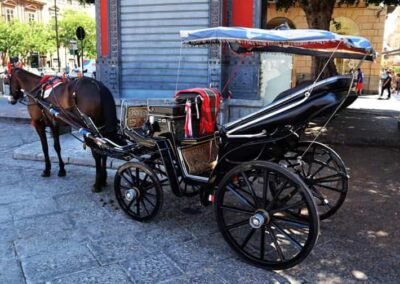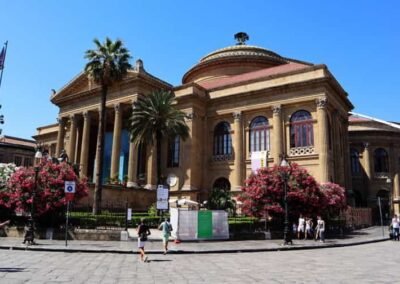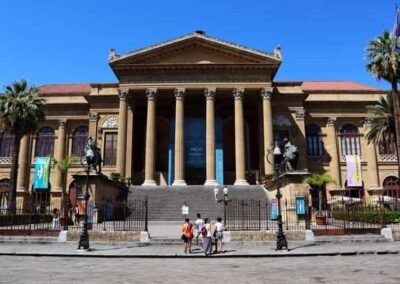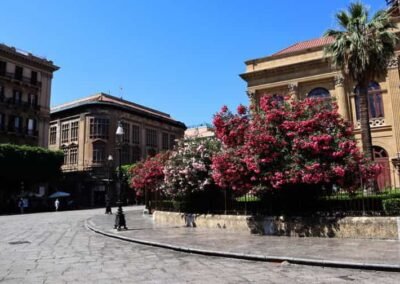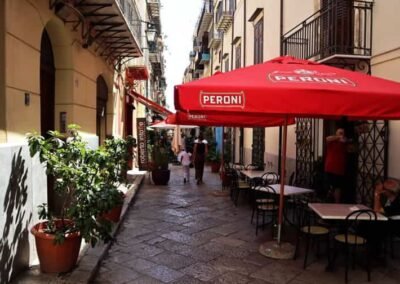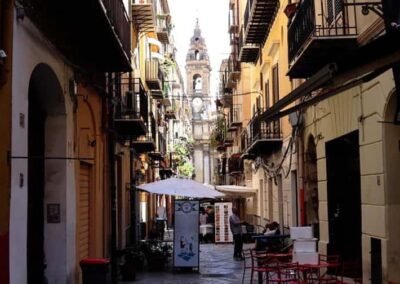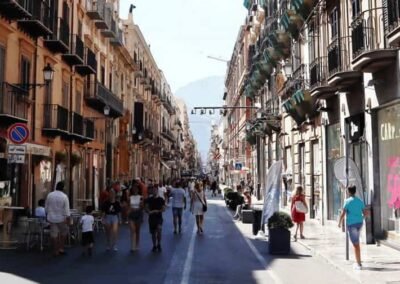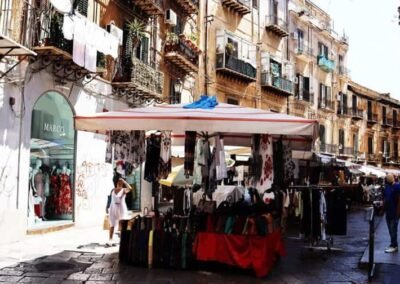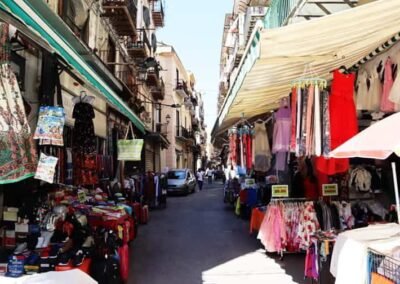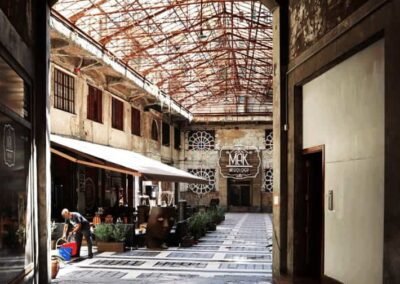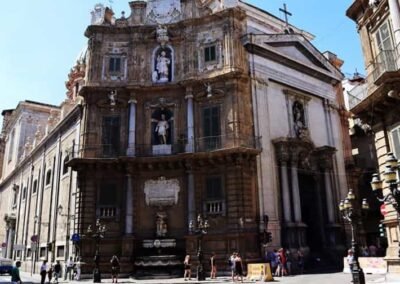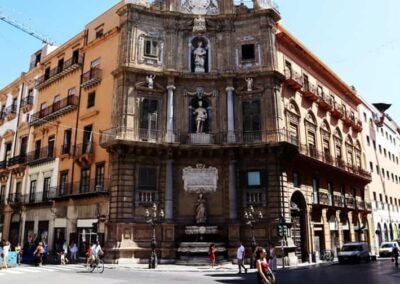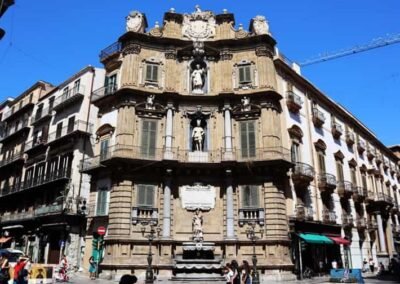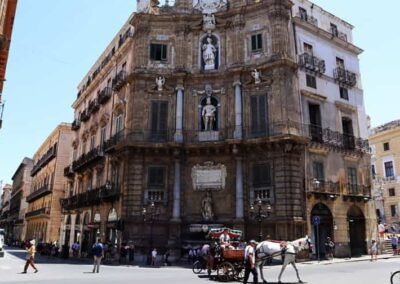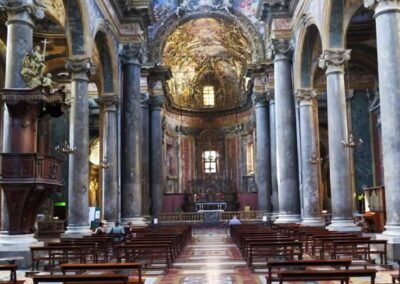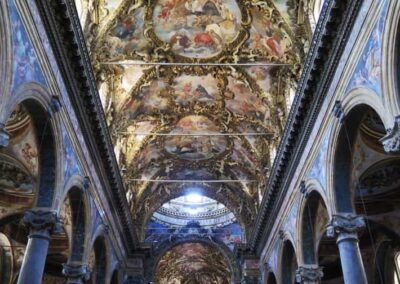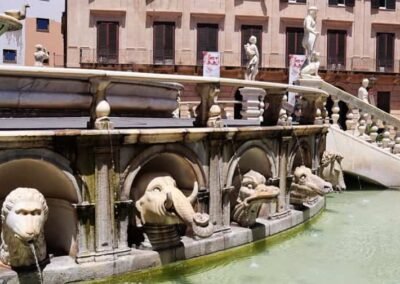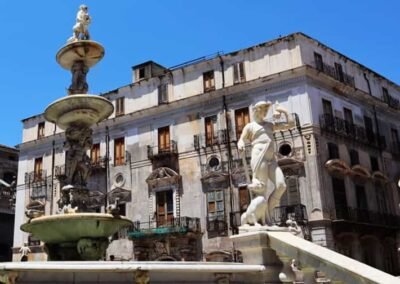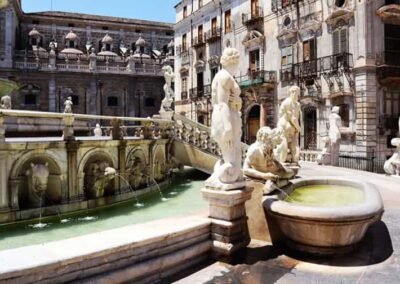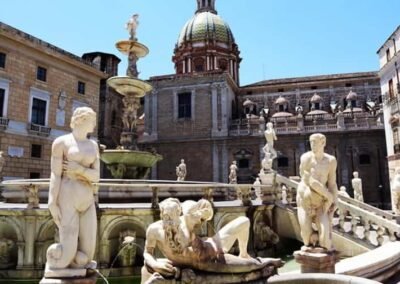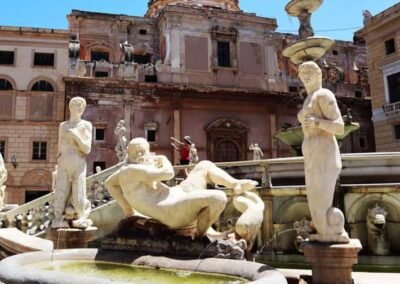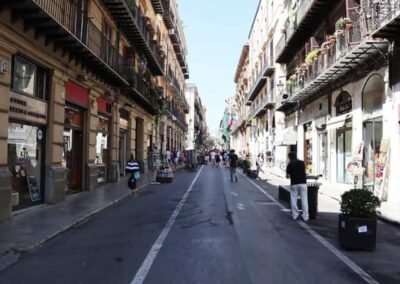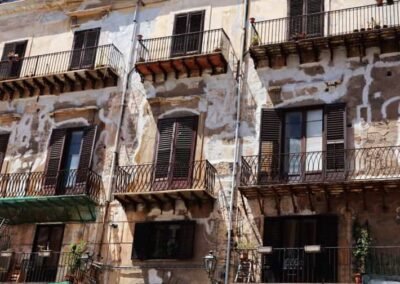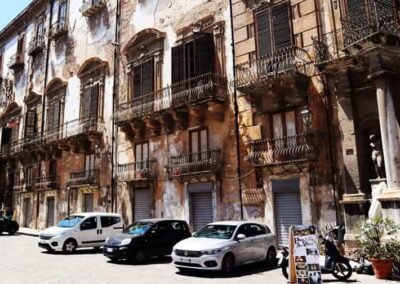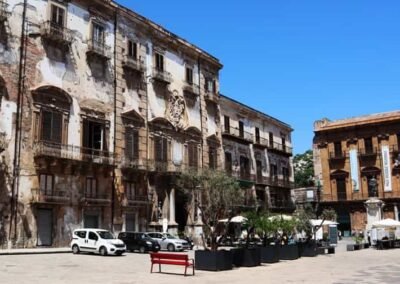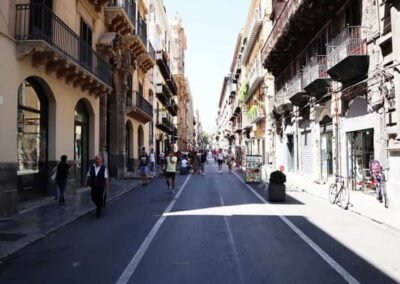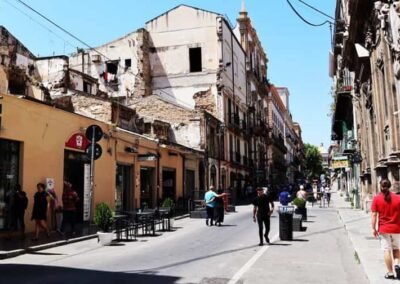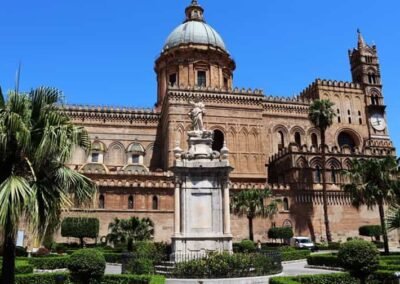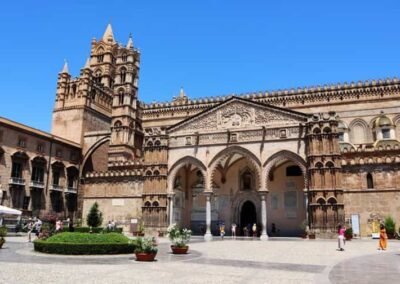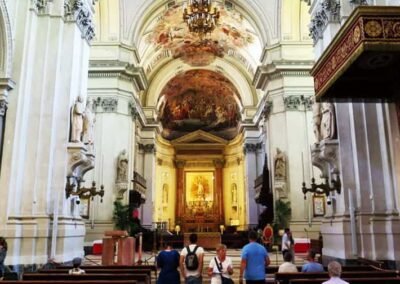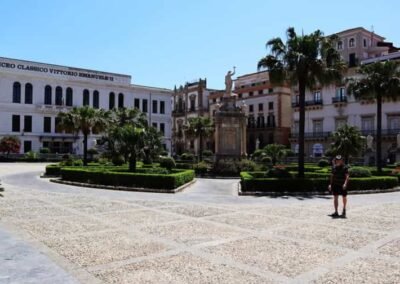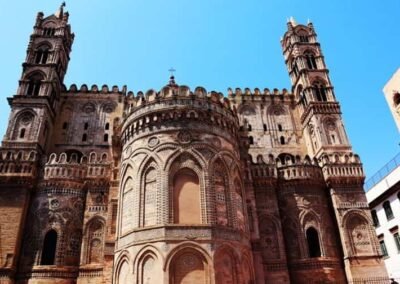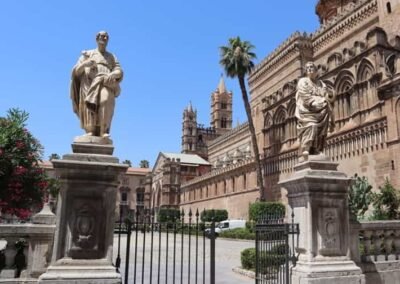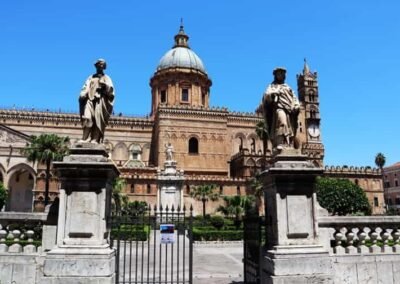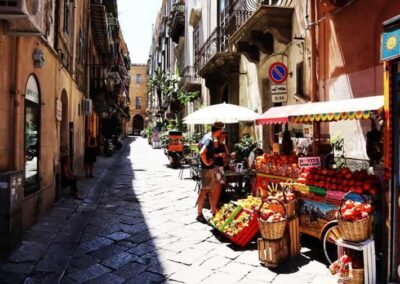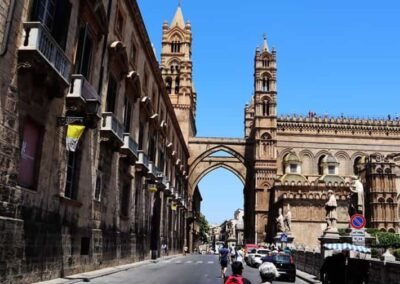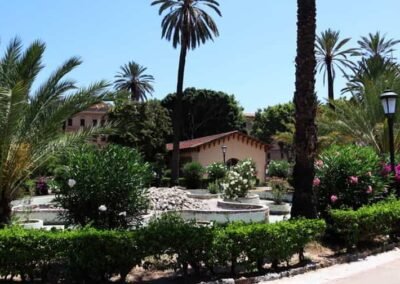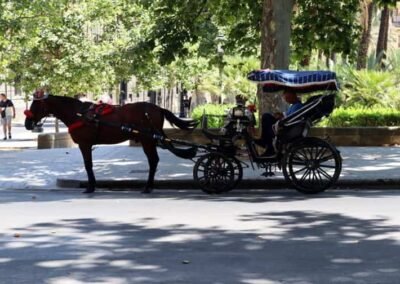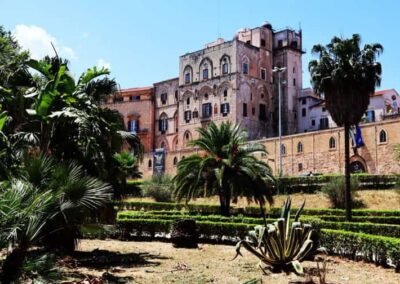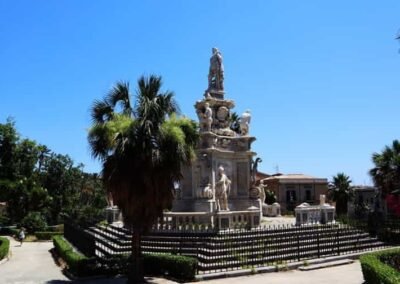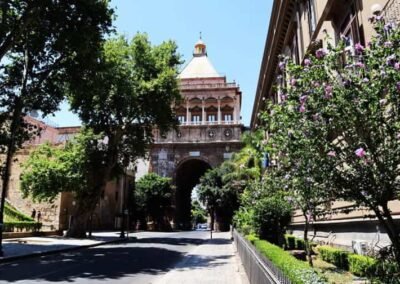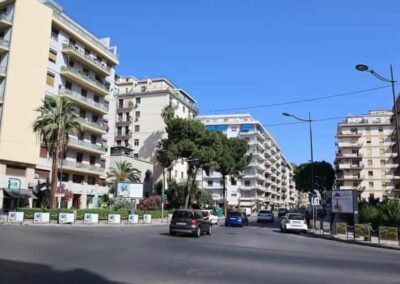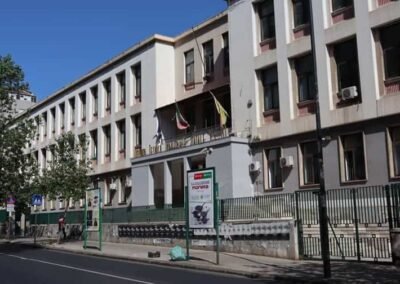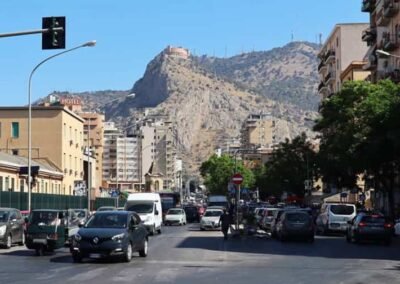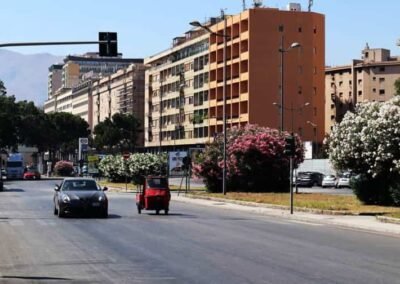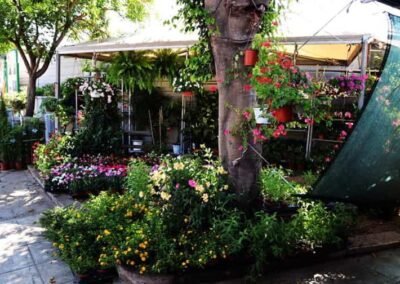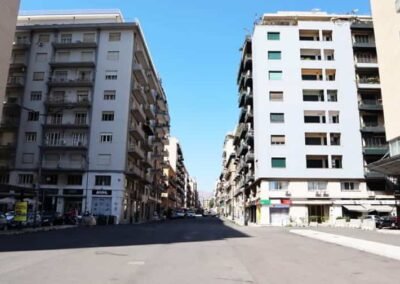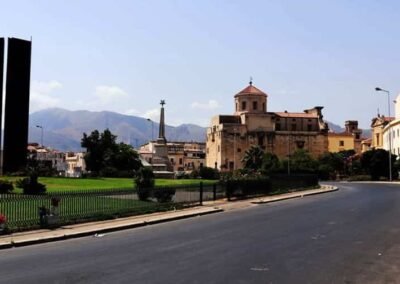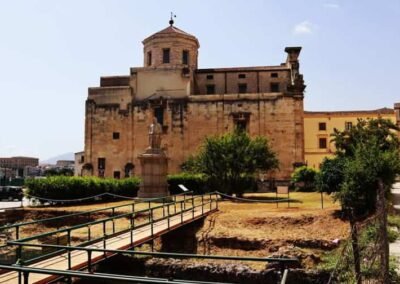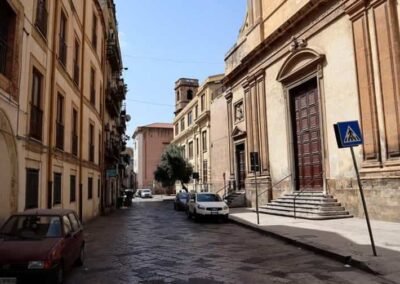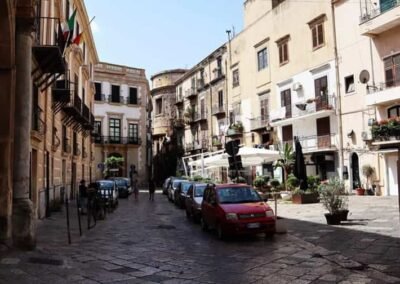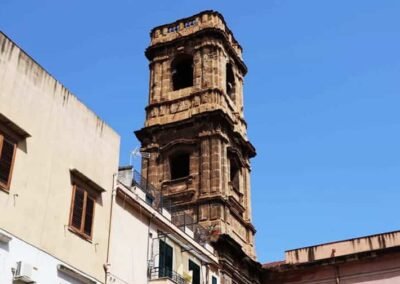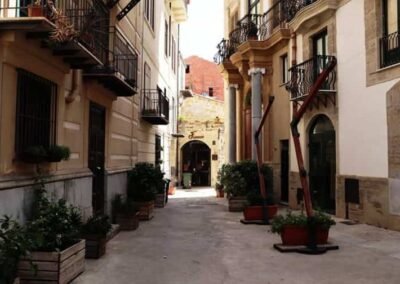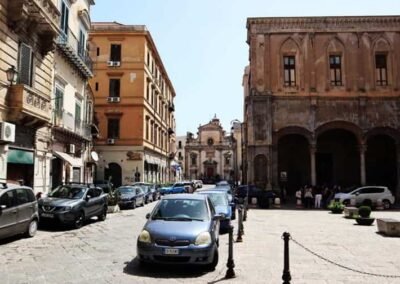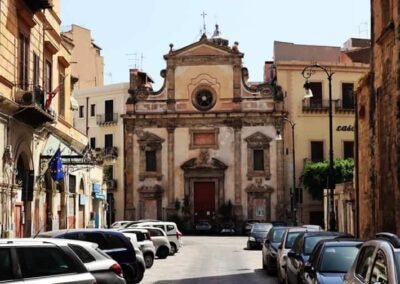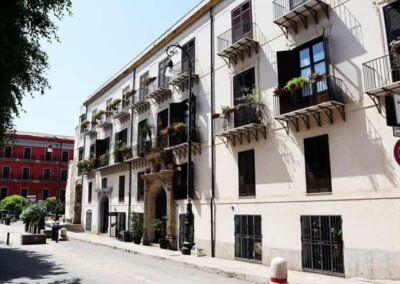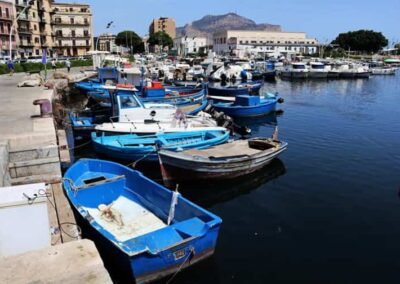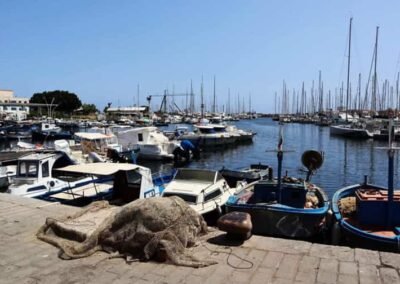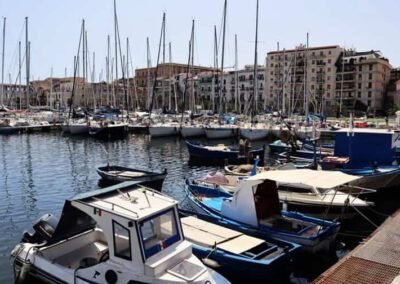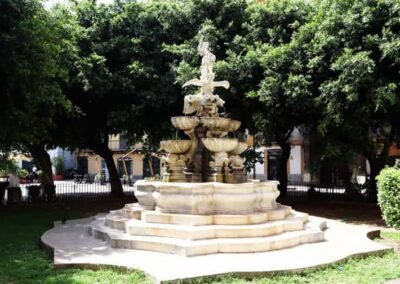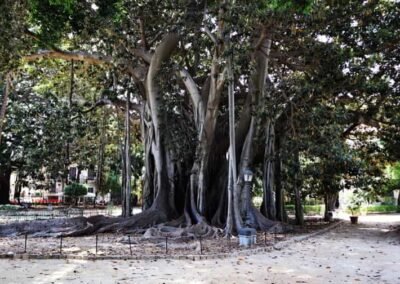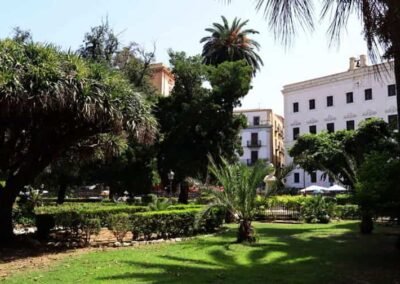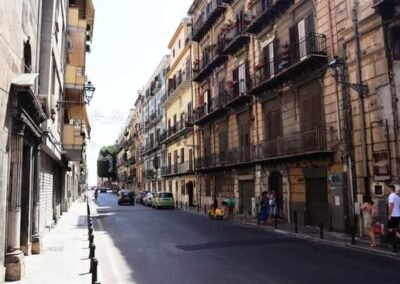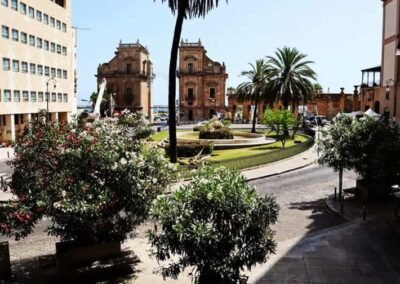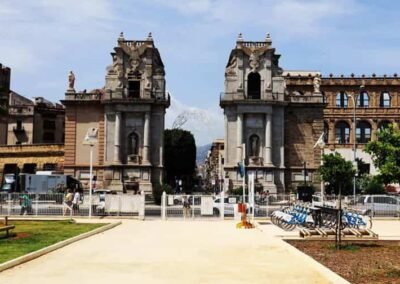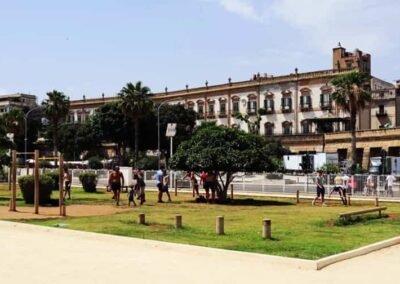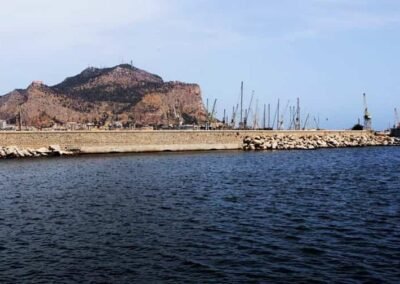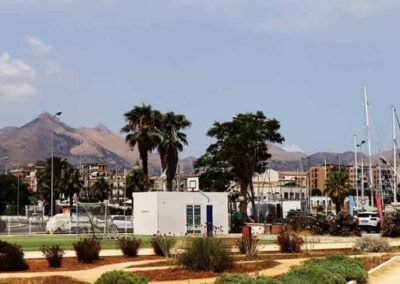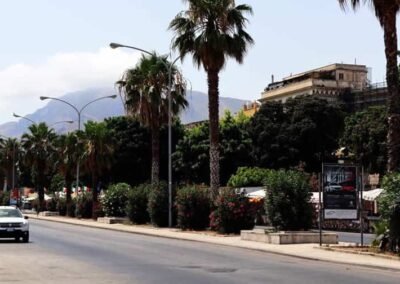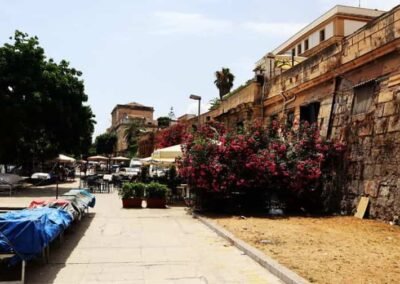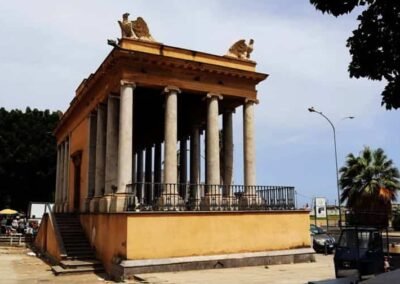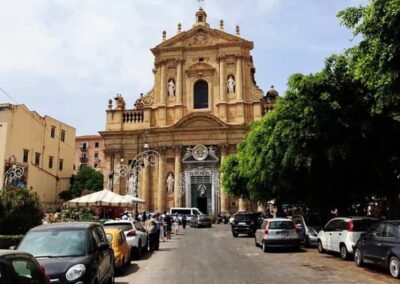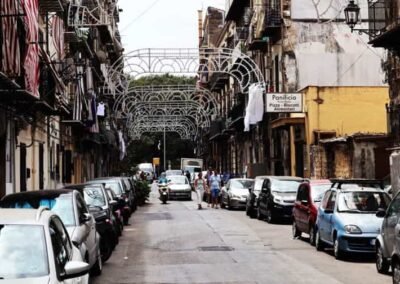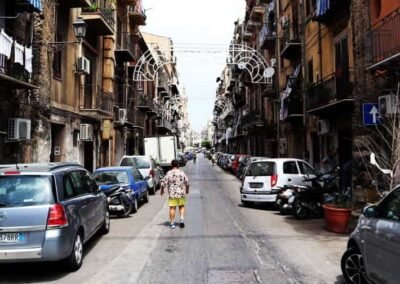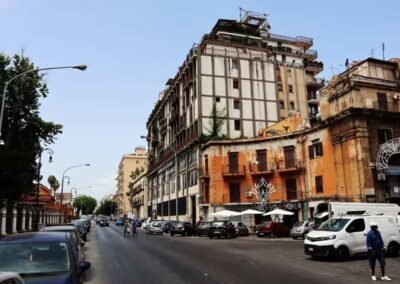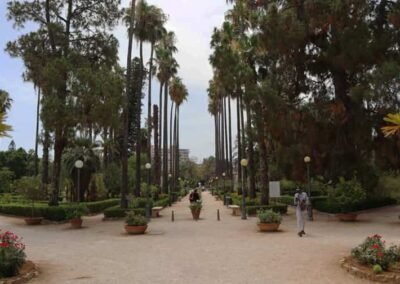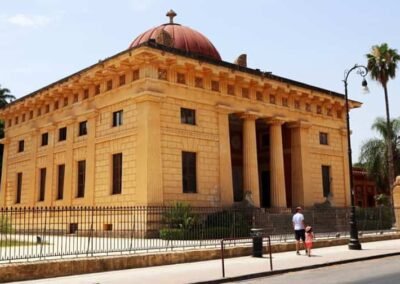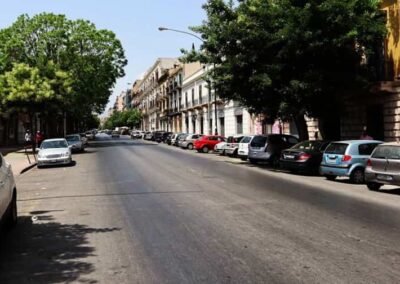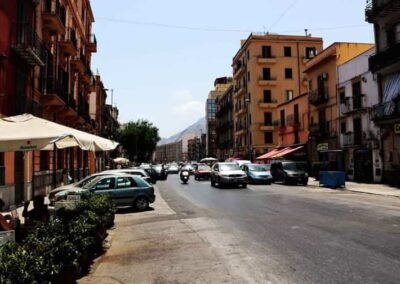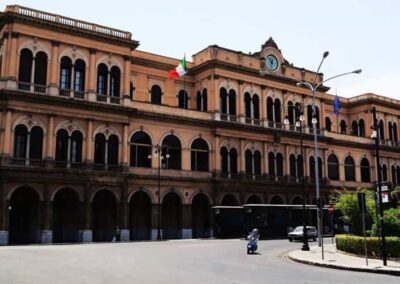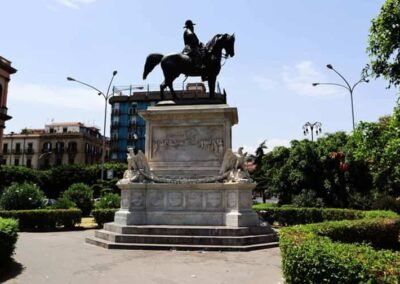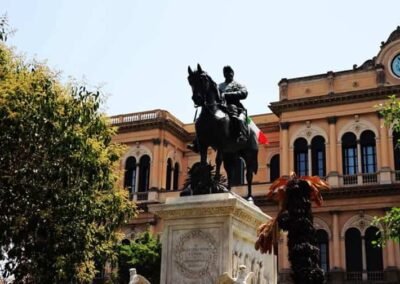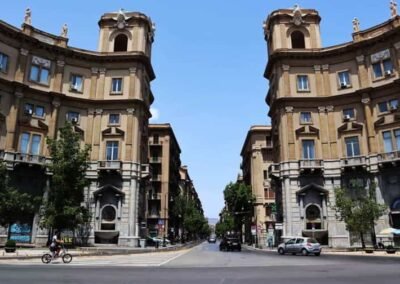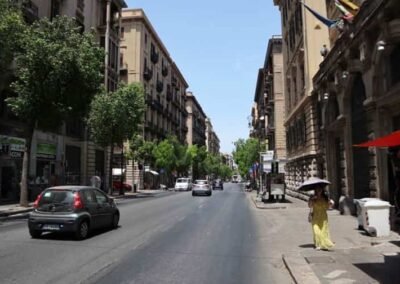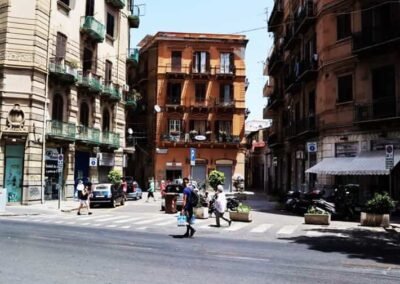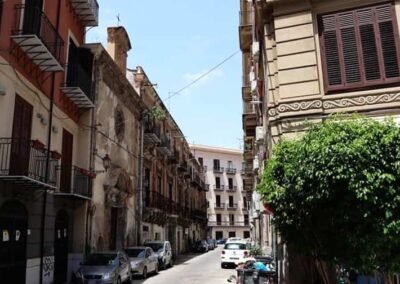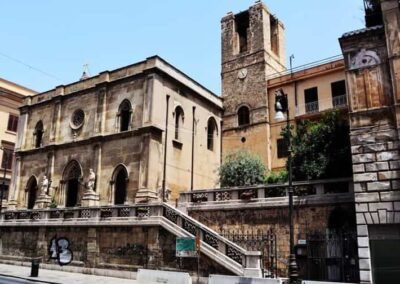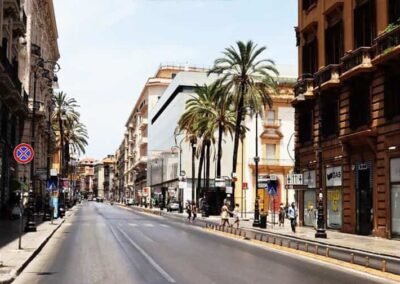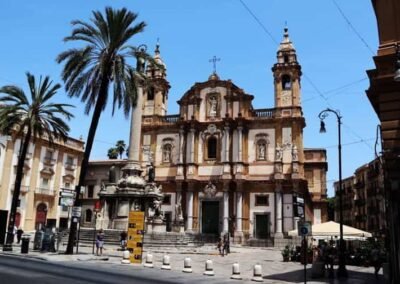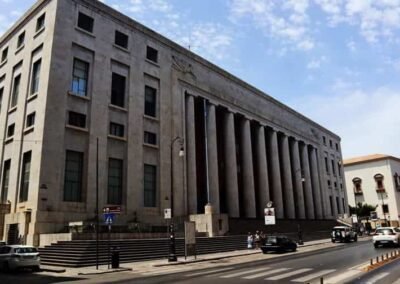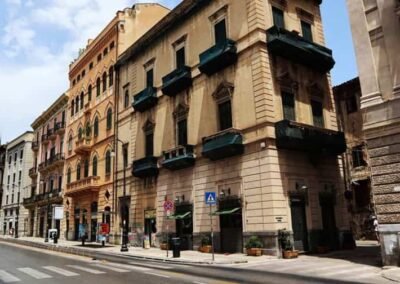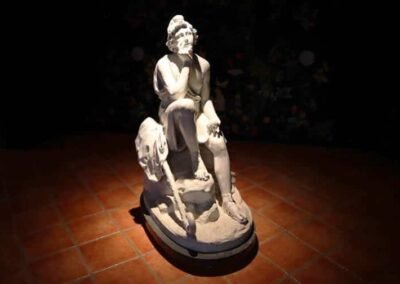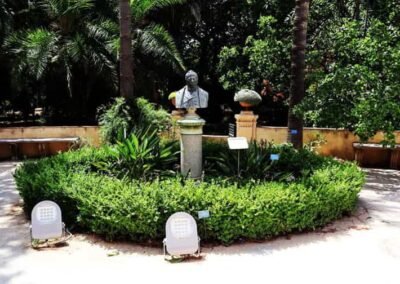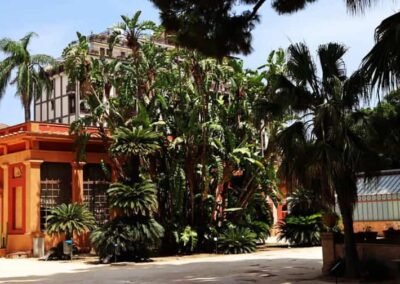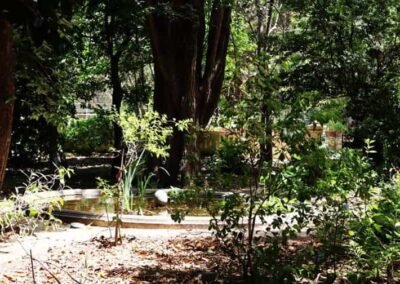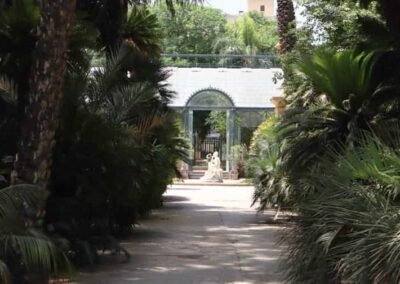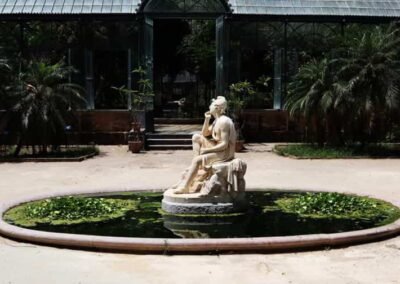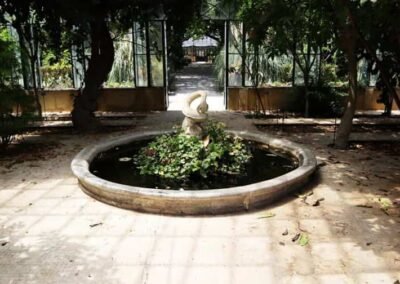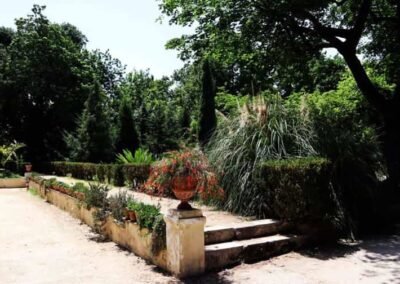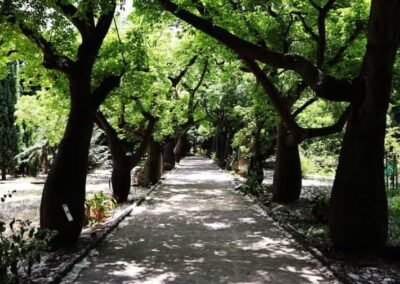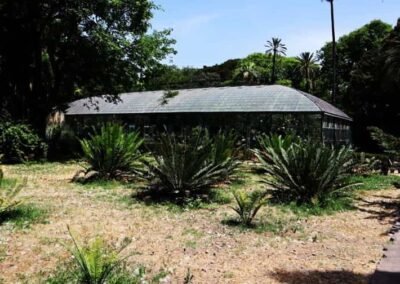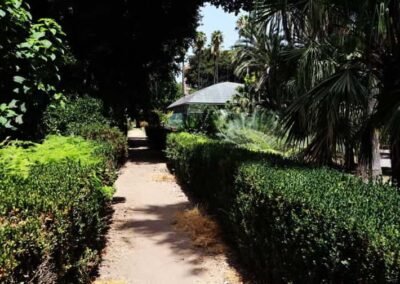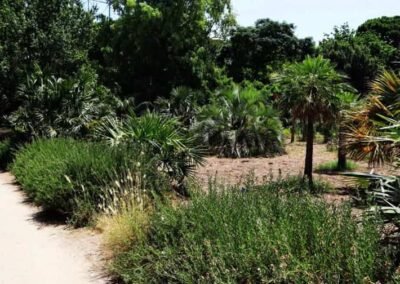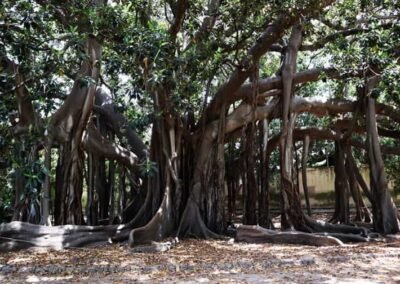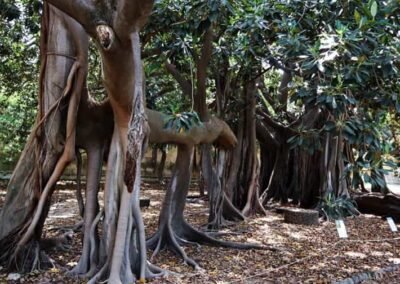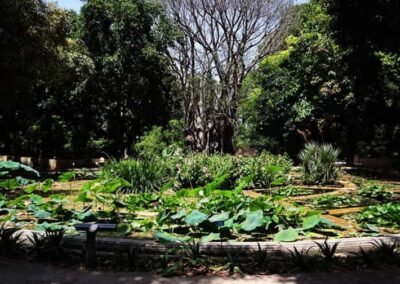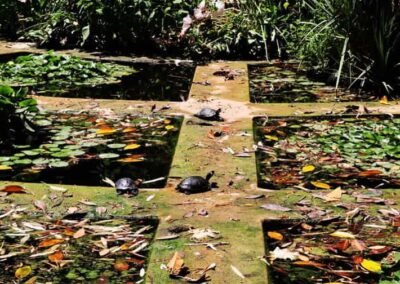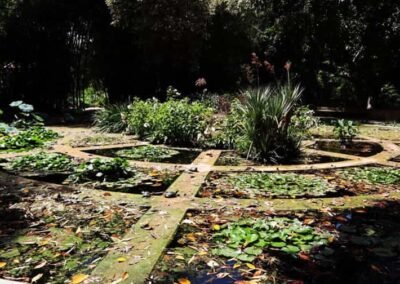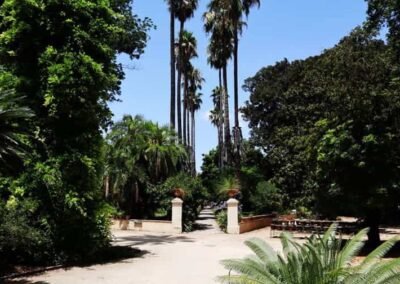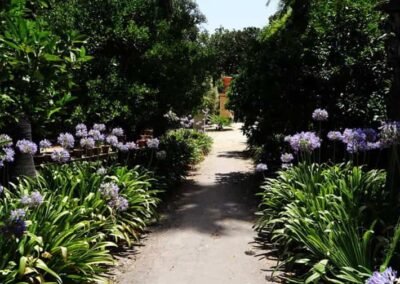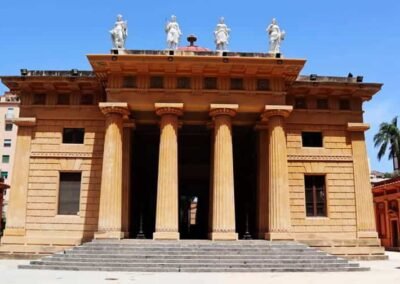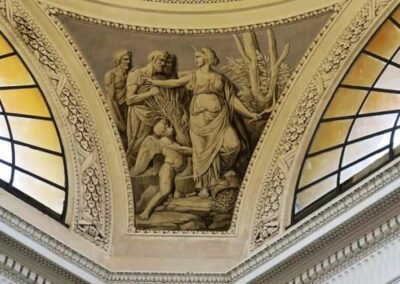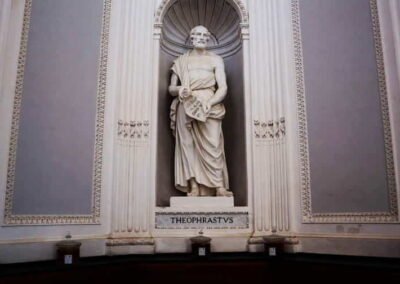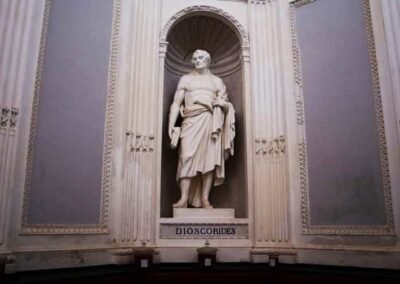HOME
THE REGIONS OF ITALY
PLACES IN ITALY
Italy in Photos
Cattedrale di Palermo, Via Vittorio Emanuele, 90040 Palermo, Italy (July 2019)
Palermo
Palermo, the capital of Sicily, is a city steeped in history, culture, and architectural splendour. Situated on the north-western coast of the island, Palermo has been a crossroads of civilizations for over 2,700 years. This rich history is reflected in its diverse architecture, vibrant street life, and a culinary scene that is as varied as it is delicious. From the Phoenicians to the Greeks, Romans, Byzantines, Arabs, Normans, and Spanish, each ruling power has left an indelible mark on the city, creating a unique tapestry of influences that makes Palermo one of the most fascinating destinations in Italy. Walking through Palermo is like stepping back in time. The city’s historic centre, one of the largest in Europe, is a maze of narrow streets and alleys that open up into grand piazzas, each with its own character and charm. The architecture is a stunning blend of styles, with Arab-Norman palaces, Baroque churches, and Art Nouveau villas coexisting harmoniously. The Palatine Chapel, with its dazzling mosaic
But Palermo is not just about its past; it is a vibrant, living city with a culture that is very much alive today. The city’s markets, such as Vucciria, Ballarò, and Capo, are a sensory overload of sights, sounds, and smells. Here, vendors shout out their wares in the local dialect, offering everything from fresh seafood and vegetables to exotic spices and traditional Sicilian Street food. The markets are a testament to Palermo’s enduring spirit and its ability to adapt while still holding onto its traditions. Food is central to life in Palermo, and the city is a paradise for food lovers. Sicilian cuisine reflects the island’s history, with influences from Arab, Norman, and Spanish cultures. Street food is particularly popular, with arancini (stuffed rice balls), panelle (chickpea fritters), and sfincione (a type of Sicilian pizza) being among the must-try dishes. Palermo is also famous for its sweets, with cannoli and cassata being the most iconic desserts. Every meal in Palermo is an opportunity to experience the city’s rich culinary heritage. The people of Palermo, known for their warmth and hospitality, are an integral part of the city’s charm. Life in Palermo moves at a slower pace, with a focus on family, tradition, and enjoying the simple pleasures. The city’s residents, or Palermitani, are deeply proud of their heritage and are always eager to share their love for their city with visitors. Whether it’s through a friendly chat in a café or a guided tour of a historic site, the people of Palermo make every visitor feel welcome.
Cultural events and festivals play a significant role in the life of Palermo. The city’s calendar is filled with religious processions, music festivals, and cultural events that celebrate Palermo’s rich history and traditions. The Feast of Santa Rosalia, the city’s patron saint, is the most important event of the year, attracting thousands of people to the streets for a week of celebrations. The Teatro Massimo, one of the largest opera houses in Europe, is a symbol of Palermo’s cultural vitality and hosts performances ranging from opera and ballet to contemporary concerts. Despite its many attractions, Palermo remains a city of contrasts. It is a place where the grandeur of its historic buildings stands side by side with the realities of modern urban life. The city has faced challenges, from economic struggles to the impact of organized crime, but it has always shown a remarkable ability to reinvent itself. Today, Palermo is undergoing a cultural and economic renaissance, with new businesses, art galleries,
Worth a Visit
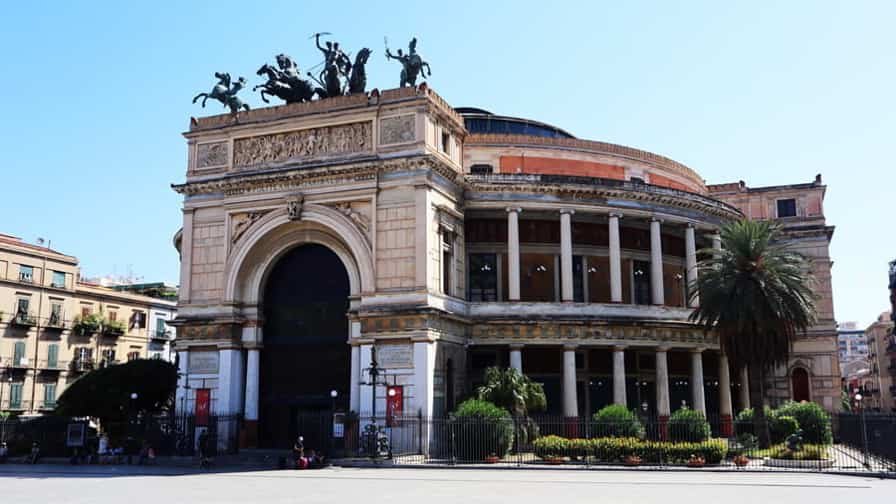
Piazza Ruggero Settimo is one of Palermo’s most elegant and lively squares, often considered a symbol of the city’s refined urban life. Located at the junction of Via Ruggero Settimo and Viale della Libertà, it forms part of the grand boulevard that connects Palermo’s historic centre with its modern districts. The square is dominated by the imposing Teatro Politeama Garibaldi, a magnificent 19th-century theatre that stands as a landmark of Sicilian architecture and culture. At its heart rises the bronze equestrian statue of Ruggero Settimo, a statesman and patriot who played a key role in the Italian unification movement. Today, Piazza Ruggero Settimo is not only a cultural hub but also a social meeting point, surrounded by stylish cafés, shops, and boutiques. Its blend of history, architecture, and vibrant atmosphere makes it a must-see stop when exploring Palermo.
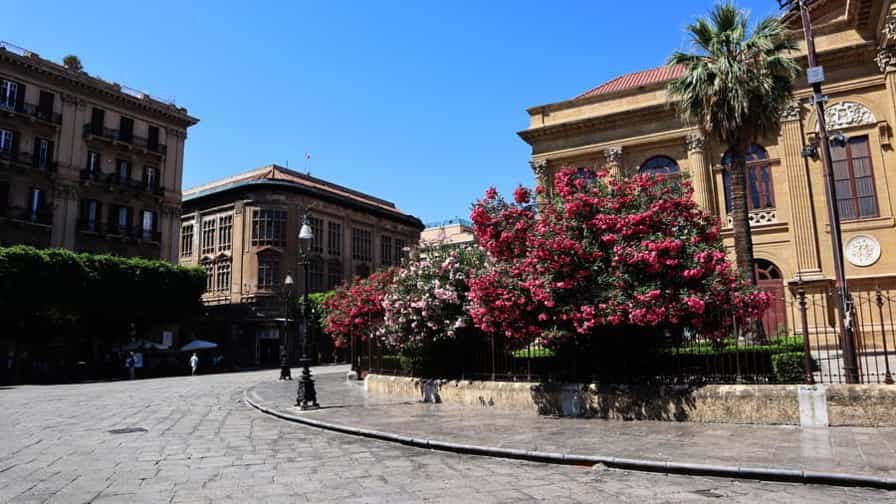
Piazza Verdi is one of Palermo’s most iconic squares, best known as the setting for the majestic Teatro Massimo, the largest opera house in Italy and a symbol of the city’s artistic soul. Opened in 1897, the theatre dominates the square with its grand neoclassical façade, elegant stairways, and monumental presence, drawing visitors from around the world. The piazza itself was designed to complement this masterpiece, creating a wide, open space that highlights the theatre’s architecture and serves as a gathering place for locals and tourists alike. Over the years, Piazza Verdi has become a lively cultural hub, hosting concerts, festivals, and public events that reflect Palermo’s rich musical and theatrical traditions. Surrounded by cafés, restaurants, and vibrant city life, it offers a perfect blend of history, culture, and daily activity, making it a central point for anyone wishing to experience the essence of Palermo.
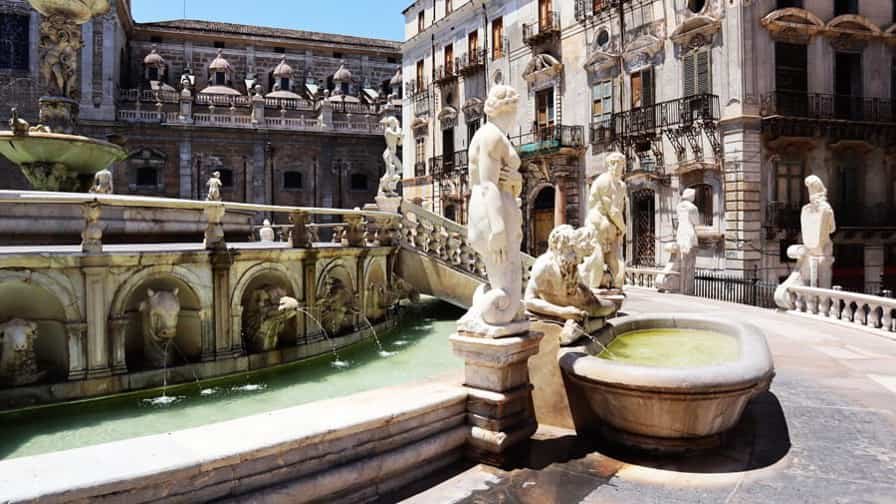
The Fontana Pretoria, located in Piazza Pretoria in the heart of Palermo, is one of the city’s most striking and admired landmarks. Originally built in Florence in the 16th century, the fountain was later transported to Palermo in 1574, where it became the centrepiece of the square in front of the city’s town hall. The vast marble structure is decorated with a stunning array of statues representing mythological figures, allegories, animals, and decorative motifs, all arranged in a harmonious circular design. Its bold, sensual sculptures earned it the nickname *“Fontana della Vergogna”* (Fountain of Shame), as the nude figures shocked the conservative citizens of the time. Today, the fountain is celebrated as a masterpiece of Renaissance art and urban design, admired for its beauty, complexity, and symbolism. Surrounded by historic palaces and churches, Piazza Pretoria and its fountain remain an essential stop for anyone exploring Palermo’s historic centre.

The Cattedrale di Palermo, officially the Metropolitan Cathedral of the Assumption of the Virgin Mary, is one of Sicily’s most remarkable monuments and a symbol of Palermo’s rich cultural history. Built in 1185 by Archbishop Gualtiero Offamilio, the cathedral reflects the city’s diverse heritage, blending Norman, Arab, Gothic, Baroque, and Neoclassical influences into a unique architectural masterpiece. Its grand exterior, with towers, arches, and intricate carvings, showcases the city’s medieval power and artistry. Inside, the cathedral houses royal tombs, including those of Emperor Frederick II and other Norman kings, as well as a precious treasury with sacred relics and jewels. Over the centuries, it has undergone several modifications, each leaving its imprint on the structure while preserving its grandeur. Today, the Cattedrale di Palermo stands not only as a place of worship but also as a historical treasure, embodying the spiritual and artistic identity of the Sicilian capital.
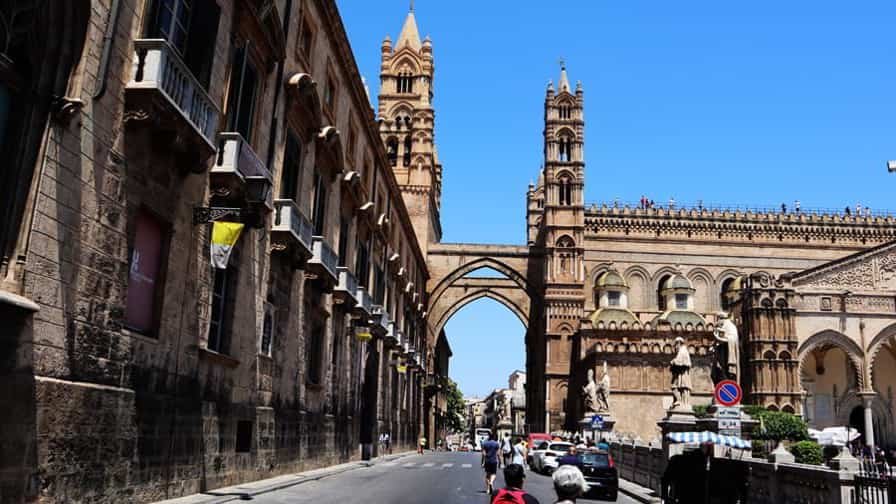
Via Matteo Bonello is a historic street in the heart of Palermo, running alongside the majestic Cattedrale di Palermo and forming part of the city’s vibrant old quarter. Named after Matteo Bonello, a 12th-century nobleman known for his role in the Sicilian uprising against Norman rule, the street carries deep historical resonance. Walking along Via Matteo Bonello, visitors are immersed in the atmosphere of medieval Palermo, with its mix of narrow passages, stone façades, and glimpses of grand monuments. The street offers striking views of the cathedral’s towers and intricate details, making it a favorite path for those exploring the UNESCO-listed Arab-Norman itinerary. Today, Via Matteo Bonello is not only a route steeped in history but also a lively area, lined with artisan shops, small cafés, and local vendors. It provides an authentic glimpse into Palermo’s character, where daily life blends seamlessly with centuries of heritage.
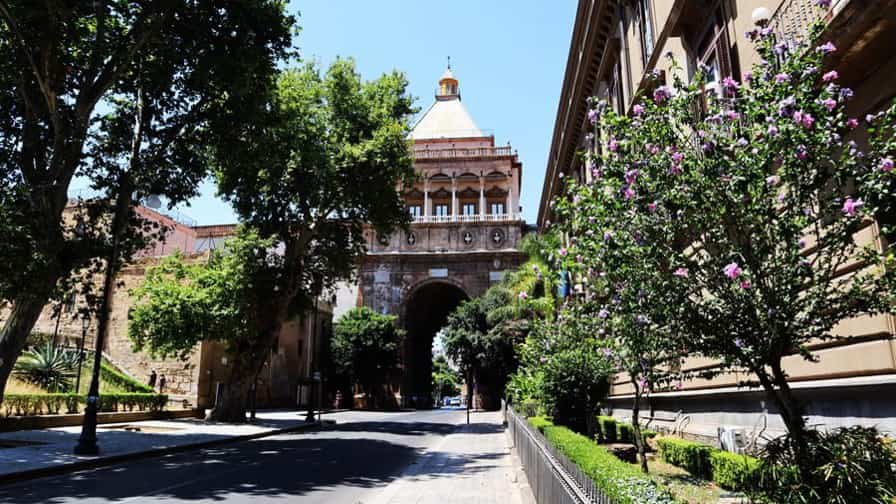
The Porta Nuova is one of Palermo’s most impressive and historically significant city gates, standing proudly beside the Cattedrale di Palermo at the entrance to the old town. Built in 1583 to celebrate the visit of King Charles V after his victory over the Turks in Tunis, the gate symbolizes both triumph and power. Its design combines Renaissance and Baroque elements, with a majestic façade that features elaborate decorations and statues. On the city-facing side, visitors can admire elegant arches and refined details, while the outer façade is striking for its bold figures of Moorish prisoners, intended to glorify the king’s conquest. Over the centuries, the Porta Nuova has served as a monumental entrance to the Cassaro, Palermo’s oldest and most important street. Today, it remains not only a remarkable example of 16th-century architecture but also a key landmark, welcoming visitors into the historic heart of the Sicilian capital.
Photo Gallery of Walk 1 – Walk along Via della Libertà
Approximately 2.09 km – 1.30 miles
The walk starts at the Statua della Libertà – Via della Libertà – Via Vodige – Via della Libertà – Piazza Alberico Gentili – Fontana Della Ninfa, Piazza Alberico Gentili – Via Duca della Verdura – Giardino Inglese, Via della Libertà – Fontana Giardino Inglese, Via della Libertà – Statua di Francesco Crispi, Via della Libertà – Via della Libertà
Photo Gallery of Walk 2 – Piazza Ruggiero Settimo to Chiesa di San Giuseppe dei Padri Teatini, Via Vittorio Emanuele
Approximately 1.33 km – 0.83 miles
The walk starts in Piazza Ruggiero Settimo – Piazza Castelnuovo – Palchetto della Musica, Piazza Castelnuovo Via Ruggero Settimo – Piazza Verdi -Teatro Massimo, Piazza Verdi – Via Maqueda – Via Bara All’Olivella – Via Maqueda – Via Orologio – Via Maqueda – Via Alessandro Scarlatti – Via Maqueda – Via Bandiera – Via Maqueda – Via Sant’Agostino – Via Maqueda – Quinto Canto, Via Vittorio Emanuele – Chiesa di San Giuseppe dei Padri Teatini, Via Vittorio Emanuele
Photo Gallery of Walk 3 – Fontana Pretoria, Piazza Pretoria to Porta Nuova
Approximately 1.84 km – 1.14 miles
The walk starts at the Fontana Pretoria, Piazza Pretoria – Via Vittorio Emanuele – Piazza Bologni – Via Vittorio Emanuele – Cattedrale di Palermo, Via Vittorio Emanuele – Piazza Sett’Angeli – Via Simone di Bologna – Via Vittorio Emanuele – Via Pietro Novelli – Via Matteo Bonello – Via Vittorio Emanuele – Piazza della Vittoria – Piazza del Parlamento -Teatro Marmoreo, Piazza del Parlamento – Porta Nuova
Photo Gallery of Walk 4 – Via Duca della Verdura to Porta Felice, Foro Italico Umberto I
Approximately 3.49 km – 2.17 miles
The walk starts in Via Duca della Verdura – Via Piano dell’Ucciardone – Via Enrico Albanese – Via Piano dell’Ucciardone – Via Piano dell’Ucciardone – Piazza delle XIII Vittime – Via Squarcialupo – Largo Cavalieri di Malta – Via Pantelleria – Via Bambinai – Piazza Giovanni Meli – Via Giovanni Meli – Piazza Fonderia – Piazza Tarzanà – Promenada Palermo, Via Cala – Via Porto Salvo – Via Vittorio Emanuele – Fontana del Garraffo, Via Vittorio Emanuele – Giardino Garibaldi, Piazza Marina – Piazza Marina – Via Vittorio Emanuele – Fountain of Cavallo Marino, Piazzetta Santo Spirito – Piazzetta Santo Spirito – Porta Felice, Foro Italico Umberto
Photo Gallery of Walk 5 – Foro Italico Umberto to Via Roma
Approximately 3.0 km – 1.86 miles
The walk starts in Foro Italico Umberto I – Parco della Salute Livia Morello, Foro Italico Umberto I – Foro Italico Umberto I – Piazza della Kalsa – Via Nicolò Cervello – Via Lincoln – Stazione Centrale, Piazza Giulio Cesare – Piazza Giulio Cesare – Via Roma – Via S. Cristoforo – Via Roma – Discesa dei Giudici – Via Roma – Chiesa di Sant’Antonio Abate, Via Roma – Via Roma – Piazza S. Domenico – Via Roma
Orto Botanico
The Orto Botanico di Palermo, the city’s historic botanical garden, is one of the most important scientific and cultural institutions in Sicily and among the most renowned in Europe. Located in the vibrant Kalsa district near the seafront, the garden forms part of the University of Palermo and has served as a center for research, education, and conservation for over two centuries. Established officially in 1789, the Orto Botanico was created to support the teaching of medicine and natural sciences, reflecting the Enlightenment ideals of knowledge, exploration, and the study of nature. Its founding coincided with a period of intense scientific curiosity, when scholars and explorers were cataloguing the world’s flora and fauna and exchanging specimens across continents. Palermo’s mild climate and strategic position in the Mediterranean made it an ideal location for such a project.
Spanning roughly 10 hectares, the Orto Botanico is not just a garden but a living museum, home to thousands of plant species from every corner of the globe. It offers an extraordinary journey through different ecosystems, from tropical palms and succulents to Mediterranean shrubs and ancient trees. The garden is particularly famous for its monumental specimens of Ficus macrophylla, a giant Australian banyan introduced in the 19th century that now dominates the entrance with its sprawling aerial roots. Visitors also encounter collections of aquatic plants, cycads, bamboo groves, and medicinal herbs, each carefully arranged to serve both scientific study and aesthetic enjoyment.
Beyond its remarkable plant collections, the garden is architecturally significant. The central neoclassical building, known as the Gymnasium, was designed by French architect Léon Dufourny and completed in 1795. With its temple-like façade and harmonious proportions, it reflects the Enlightenment ideals of order and rationality, symbolizing the union of art and science. Nearby, greenhouses, aquaria, and experimental plots demonstrate the garden’s original function as a research institution, where plants were cultivated, classified, and tested for their agricultural or medicinal potential.
Today, the Orto Botanico continues to fulfill its dual role as a center for scientific research and a public space for relaxation and education. It collaborates with international institutions on conservation projects, focusing especially on Mediterranean biodiversity and endangered species. At the same time, it offers residents and visitors a green oasis in the heart of Palermo, where one can stroll among exotic landscapes, study rare plants, or simply enjoy the peaceful atmosphere. The garden thus embodies a rich fusion of history, science, and natural beauty, making it a vital part of Palermo’s cultural heritage and a unique destination for all who wish to explore the deep connections between humans and the plant world.
Palermo
COPYRIGHT © 2018-2025 ITALY IN PHOTOS - ALL RIGHTS RESERVED
